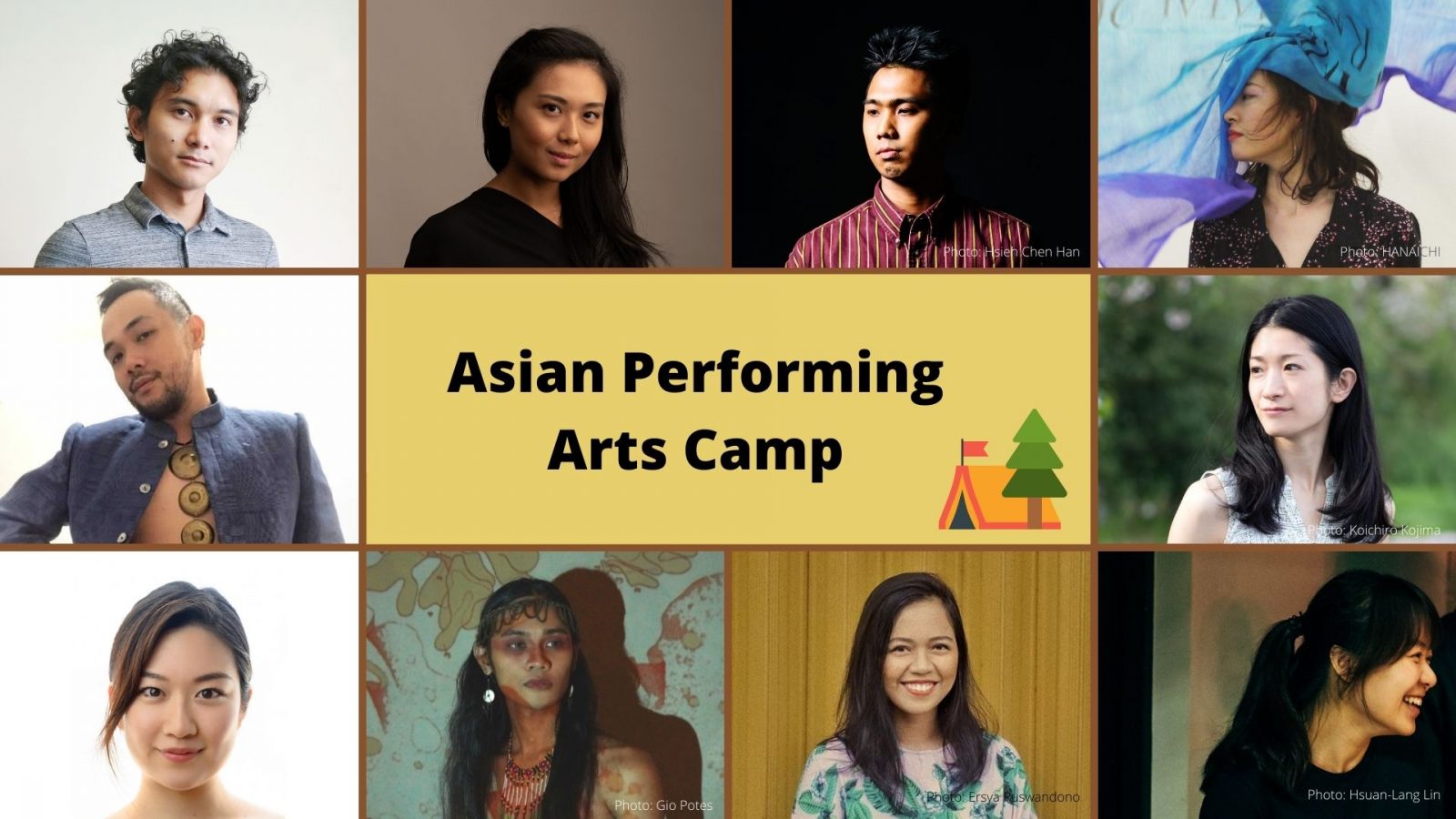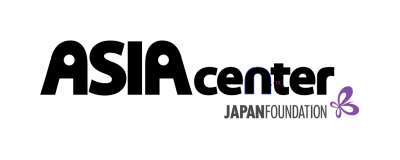OPEN FARM
(Process Report)

Asian Performing Arts Camp Report (Part 1)
A midterm presentation showcasing eight artists’ research processes
Asian Performing Arts Camp brings together artists from across Asia for about two months to engage in an online arts camp. This year, eight artists from seven countries joined the program. Together, they are nurturing new ways of thinking through discussions and joint research and will share their findings during a final presentation held on October 30.
After their first meet-up in late August, each participant shared their current research themes. They provided each other with feedback while continuing with their individual explorations. They also attended various lecture workshops, including one led by UEDA Kanayo, director of the non-profit organization The Room for Full of Voice, Words, and Hearts, which runs the guesthouse Cocoroom in Kamagasaki, Osaka. On September 29, midway through the camp, a midterm presentation was internally held to share the artists’ research themes and other topics of interest.
Text by KAWANO Momoko
Before the program participants gave their midterm presentations, facilitator YAMAGUCHI Keiko outlined the program trajectory up to that point. She explained that the camp calls their regular online gathering's "Wander Trekking"––a reference to wandering and strolling around without a fixed destination––and that each artist worked on their own project while sharing their questions and communities, wandering and sometimes getting lost on their travels from place to place.
Co-facilitator JK Anicoche greeted everyone and explained that participants would be sharing their initial research proposals and questions. He encouraged everyone to actively connect, participate, and share moments in time with the camp participants.
Next, Keiko led everyone through a warm-up massage. In addition to moving various parts of their bodies, the participants also used certain areas like their shoulders and hips to massage their surroundings, including the furniture and walls. Once people were warmed up and relaxed, the presentations began.
Each participant had about 10 minutes to present. Prior to the presentations, the participants had shared their background, activities, questions, as well as the things they hoped to try out in the session. The presentations had no fixed format, and included lectures, performance, dance, and video. This was a session to get a sense of the artists’ “current location” ––what matters to them and what action they’re taking in their respective regions.
1. ANG Xiao Ting - Singapore
In Xiao Ting’s presentation, she began by quoting Ian Garrett: “All theater now is effectively about climate change but how actively can you make it prominent?” and expanded on her project "Eco-Theatre," where people eat delicious, rescued produce in a theater context. She emphasized the importance of artists having their own communities.

She also introduced "Extinction Feast," a work highlighting the importance of the local seafood consumption in Singapore, which relies on exports. After a short monologue, she asked five participants to say “fish” in their native languages in an attempt to discover many commonalities amongst regions experiencing climate change.
2. KIKUCHI Monami - Tokyo / Chiba / Yamagata (Japan)
Monami shared how she was fatigued, feeling like she was using her body differently with increased online communication due to the pandemic. She staged a performance using her body to understand how to feel more connected to the online space through her physicality. She prefaced it by inviting the audience to move their bodies if they felt compelled to do so, and to enjoy the sensation of connecting through their imaginations. She also wove imagery with phrases like “A black river... What does the rain sound like? ... How about near the river?” On-screen, a few others also joined in. Though the participants were all in their own rooms, they used their bodies to travel.

3. Albert GARCIA - Taipei (Taiwan) / Macao
Albert’s research focuses on land, territory, and the body as well as the relationship between government-owned regions and their inhabitants. For his performance, he walked through and around his home as he considered the situation surrounding migrant workers who cannot go home due to the pandemic. He explained, “As an immigrant myself, I’m always searching for ways to discover where I belong.” Suggesting a karaoke session to recreate "Kapwa," a term he learned in the camp that refers to a sense of shared identity and shared space, Albert danced and sang his heart out!

Seeing Albert exclaim, out of breath, “We shared our identity and space!” facilitator Keiko teared up, Tokyo Festival Farm Director TADA Junnosuke laughed out loud, and audience members sent him a round of applause.
4. Eka WAHYUNI - Yogyakarta (Indonesia)
Eka lives in Yogyakarta’s Pajangan village, where land is being sold to the government and investors, and a new university is reportedly being built. Wooden buildings are being replaced by those made of concrete, and people have started using cell phones. Eka described these changes using a photo slideshow while representing the village women through acts like “putting on makeup” or “holding up a smartphone” in her Zoom screen.

She hypothesized that the proximity of digital media has changed people’s fashion styles and ideal jobs––that people now feel that money promises them their dream lifestyles or identities. She shared her plans to research the following question for her final presentation: “What do people want to be seen as or perceived as by the outside world?”
5. WANG Hao-Yeh - Changhua (Taiwan) / Berlin (Germany)
Taiwan’s Changhua, Hao-Yeh’s hometown, used to be an economic trading hub. As development slowed, many young people left for better opportunities. However, they say a new luxury department store will open in 2024. Hao-Yeh initially felt excited at the prospect of employment opportunities and city development. But do we really want a building that reaffirms capitalism’s victory? What if we were able to decide its use? She asked participants to fill out a survey in which they suggested ideas like a library or a garden.

Then, she played a video to show the history of Changhua fading from its cityscape. After being given the shared context, the city appeared close, as if viewers could sense the people’s presence and their breathing.
6. Walid ALI - Kuching (Malaysia)
Walid researches the commonalities among Asian people in art, cultures, and customs. His performance started with the phrase, “I am Walid Ali,” followed by sounds he made with his body. While the audience continued to hear a bird chirping in the background, he cracked a bulb of garlic and peeled the skin of a clove. He placed the clove on an origami ship. He drank one cup of soda with the garlic and another without it. Walid interspersed images and used lighting effects to create a beautiful, shared moment.

7. KUSANAGI JuJu - Tokyo (Japan)
JuJu considers ways to nurture kinesthetic empathy across time and space. She discussed how she explores these ideas using materials like wax, plaster, and glass and introduced an exhibition where she created three-dimensional and spatial artworks. Viewers had to observe the works through openings in the wall, meaning they couldn’t see the work without using their bodies to peep through the holes.

As an experiment on the act of peeking, JuJu did a performance visualizing a hole in her Zoom screen. The audience was drawn into a poetic narrative that stimulated the visual, auditory, and olfactory senses.
8. Serena MAGILIW - Manila (The Philippines)
Performance artist and activist Serena Magiliw researches heteronormative images within society. Honoring the history of LGBTQIA+++ people fighting for recognition, she prays for "rampa" to occur everywhere. "Rampa" means a thing that connects two points, or a bridge, in Tagalog. Accompanied by a powerful confrontational song and crisp dance moves, she displayed a performance that embodied "rampa."

Feedback session: “What’s your omiyage from today?”
During the feedback session, Keiko asked participants: “What is your omiyage or souvenir that you would like to bring back from today’s presentation?” Everyone was invited to write their answers on a whiteboard tool or in the chat.

Some audience members touched on the challenges of performing and sharing their personal contexts in a comprehensible way. Other audience members made comments such as, “I felt the possibilities of sharing even if we come from different backgrounds,” and “I was able to feel everyone’s physicality through the screen. We were able to share our countries, ideas, and localities across the ocean.” These comments reflected how even at a distance some still found resonance.
At the end of the presentations, Director Tada commented, “I was reminded of the importance of art, the performing arts, and the arts as a whole today. Collaborating is like putting someone else’s furniture in one’s room. Today’s midterm presentation was similar to everyone introducing their own room. The significance of this camp lies in how you incorporate other people’s sensibilities into that room. For the final presentation, you’re free to invite others into your room, visit other people’s rooms, or create new ones together. I’m looking forward to seeing what these members can come up with.”
The sense of urgency was palpable in the midterm presentations, which showed how each artist was researching their identity and a sense of awareness closely tied to their surroundings. While living far away from one another, they seemed to take in the atmosphere and situations of distant places online. In the latter half of the camp, they will likely be influenced by one another’s cultural and environmental backgrounds and work together on individual issues with ideas one cannot come up with alone. We look forward to seeing these collaborations materialize in the final presentation, which is sure to change the way we see things.
Asian Performing Arts Camp Report (Part 2) Beyond online: where will the artists go?
https://tokyo-festival.jp/2021/en/openfarm_2
Mr. JK Anicoche, one of the facilitators of Asian Performing Arts Camp, passed away in November after the program was over. We deeply regret the loss and express our sincere condolences to his family and friends.
Asian Performing Arts Camp
https://tokyo-festival.jp/2021/en/farm_program/camp/
Grant : The Japan Foundation Asia Center Grant Program for Enhancing People-to-People Exchange

KAWANO Momoko
KAWANO Momoko studied theatre and stage production at J. F. Oberlin University. After graduating she worked as a writer and editor for weekly magazines, television, specialist journals, etc. She currently writes interviews and articles on performances of contemporary dance and other fields, with a focus on theatre. As well as continuing to visit theatre festivals in Japan and overseas, in recent years she has been reporting on local culture and accessibility in performing arts.




